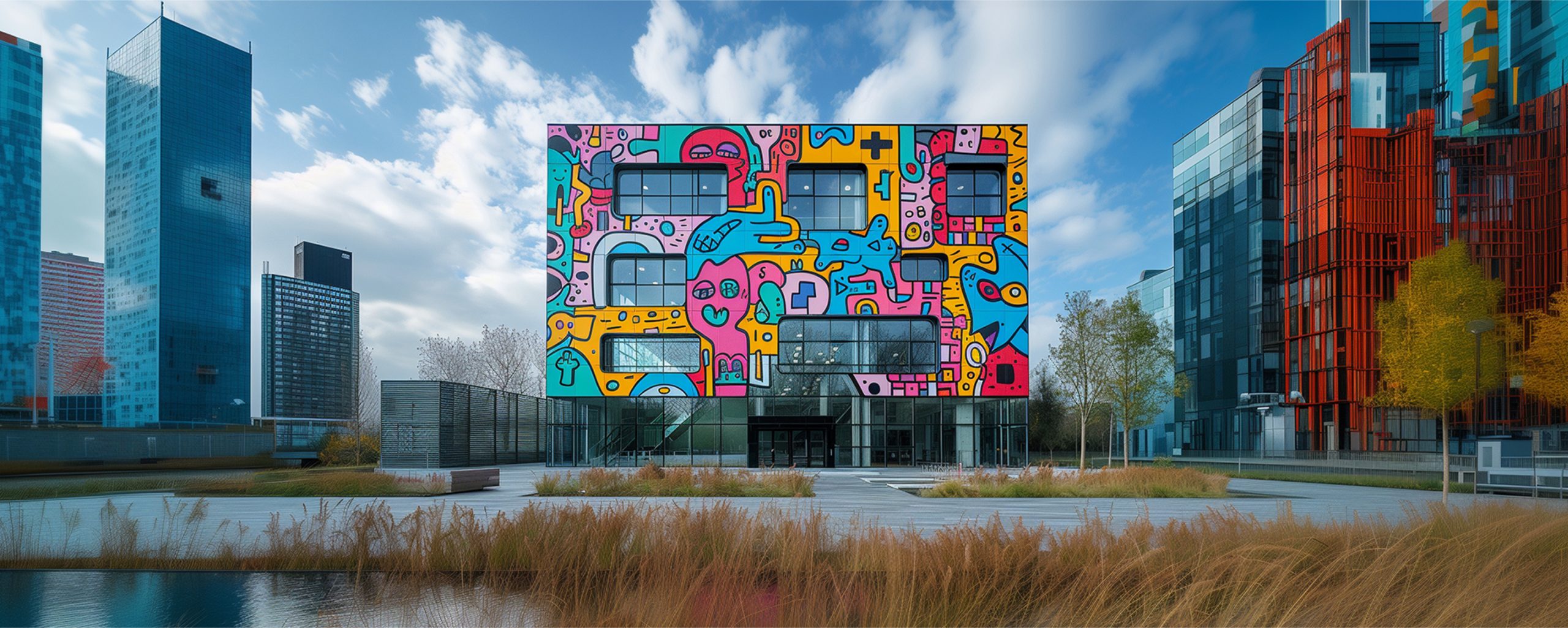AI Can’t Understand You
(But it Can Boost Your Business)
Have you ever opened ChatGPT and not sure where to start to obtain at a usable result that lives up to your expectations? To write a prompt for Midjourney and then rewrite it dozens more times, proceeding by approximation or relying on another AI, before arriving at the “desired” image? And it wasn’t even what you had in mind. The famous unorthodox artist Ai Weiwei (Ai, ironically, has nothing to do with artificial intelligence), in a recent interview with La Repubblica*, describes this feeling of dissatisfaction, attributing the reasons to the very nature of AI, a tool to which “It lacks the spark of imagination and passion that are inherent to human creativity. However, we are faced with a lifeless entity.” How can we find the right balance in a context where the relationship between humans and machines is increasingly important? What is the formula for approaching this tool to achieve a satisfactory result? Is there a risk of ideological flattening and creative uniformity hidden behind the massive use of AI, and what consequences would it have in communication?
I deliberately began writing this article with a series of questions to highlight how the key to understanding lies precisely in this detail: asking questions. In this case, turn to the AI on duty. Of course, asking good questions is not trivial, and the answers are not always clear. Arriving at a valid result can require a lot of energy, experience, and sensitivity, which an algorithm cannot always do.
In the field of creativity, which in OpenKnowledge permeates areas such as learning, branding, change management, and corporate or internal communication, we overcome the limits of this “new” tool by basing our approach on the human aspect of creative design: the strength of ideas. AI cannot replace human ideas; it doesn’t know how to do it.
Between artificial intelligence and human creativity
Just as photography took its first steps towards becoming an indispensable tool for human expression two centuries ago, just as Photoshop did in the 1990s, artificial intelligence is also finding its place alongside these tools to enhance ideas and transform them into reality. If we leave a camera still on a tripod, nothing happens. Taking control of the tool is fundamental – it requires commitment and continuous challenges – but, as such, it remains only a means by which to define the result. In this process, the figure of the creative professional remains a central element precisely because he can trace the idea from which everything arises. Citing the same interview with the Chinese artist, if we entirely relied on the tool “to reach conclusions about the world [..] then the truth begins to distort, [..] providing answers that are only apparently adequate but which, however, are not neither deep nor thorough.”
If we interpret the word “truth,” mirroring its meaning within the business world with the concept of “output,” the risk of encountering similar results manifests relentlessly. If every business, brand, or project began to communicate through the same visual or language codes used by others, questioned by the cold use of a machine, one’s way of expressing oneself and sharing values would immediately lose effectiveness. And when communication loses effectiveness, the business also risks neglecting its identity and going adrift.
Beyond homogenization: preserving corporate identity through creative expression and the intelligent use of AI

The cover image and the one above were created with Midjourney
Let’s keep in mind that it is not only the way communication is conveyed that amazes and makes the message “memorable”; above all, it is the meaning. The sense pushes the audience to carry out the action we are asking them to do, the ultimate goal of applied creativity. The development plays an essential role but rests on the idea that it “does the work.” At OpenKnowledge, we design with this method, knowing that AI allows us to develop with many expressive possibilities but that the added value is the people who exploit its potential. The quality expressed results from the experience that our team – a group of professionals with heterogeneous backgrounds, seniority, and skills – has gained in their journey to know how to use AI to the advantage of an idea. Therefore, the symbiosis between thought and medium guides the creation of messages that are increasingly coherent with the targets we direct them towards and the market on which they land, dressing up with an innovative matrix of meaning, acquiring strength and recognizability as they are reiterated.
We believe that AI can play a decisive role in this process and that the business to which we apply it can benefit from the same enhancement, anticipating the future and maintaining a high level of quality in the way it expresses itself. AI doesn’t make us faster; it doesn’t make us more capable but instead, more powerful.
* “L’intelligenza è solo umana” by Antonello Guerrera, la Repubblica,16 February 2024
Author
Andrea Carminati

 9 April 2024
9 April 2024
